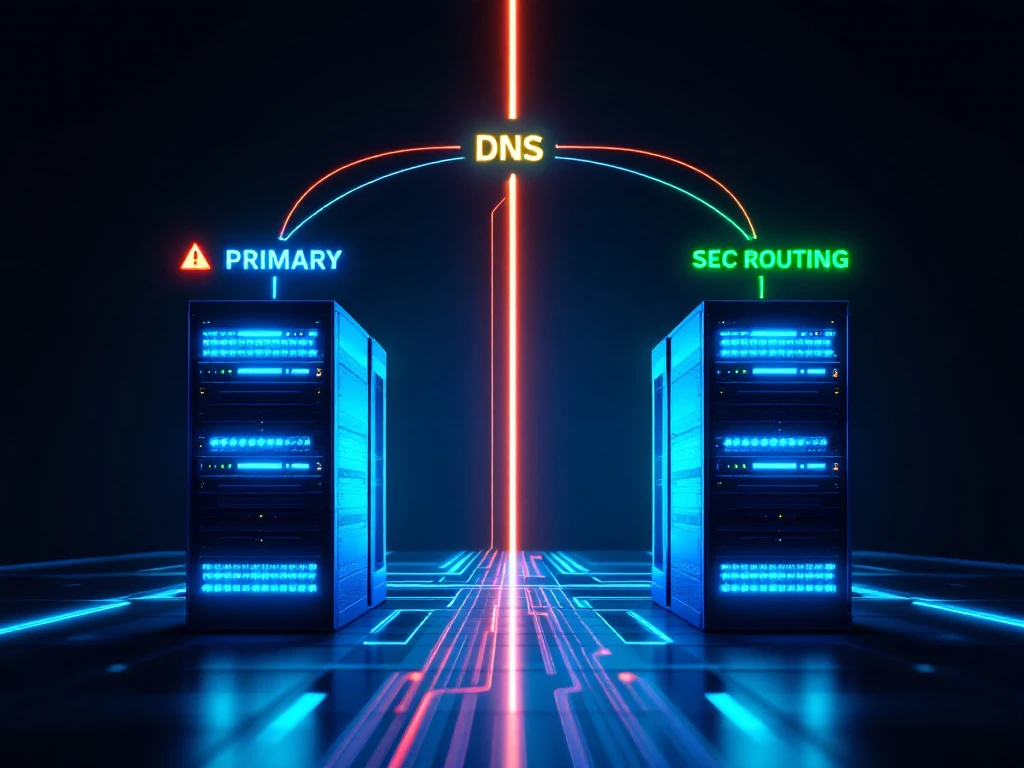What are the common causes of DNS downtime?

DNS downtime is primarily caused by configuration errors, hardware failures, propagation delays, and security threats. The Domain Name System (DNS) translates domain names into IP addresses, and when it fails, websites and services become unreachable. Common causes include incorrect DNS records, server outages, improper zone file settings, network connectivity issues, and distributed denial-of-service (DDoS) attacks targeting DNS infrastructure. These failures can result in significant business disruption, lost revenue, and damaged reputation for companies relying on online services.
Understanding DNS downtime and its impact on cloud services
DNS serves as the backbone of internet navigation, functioning as the internet's address book by translating human-readable domain names into machine-readable IP addresses. When DNS systems fail, the impact on cloud services can be devastating, effectively making websites and applications invisible to users even when the underlying infrastructure remains operational.
For businesses relying on cloud infrastructure like Falconcloud, DNS downtime can result in immediate financial consequences. E-commerce transactions halt, customer support becomes unreachable, and business operations depending on cloud-based applications grind to a stop. A study by the Ponemon Institute estimates that unplanned downtime can cost businesses thousands of pounds per minute.
Beyond immediate financial impact, DNS failures can damage brand reputation and customer trust. In our increasingly connected business environment, even brief periods of inaccessibility can drive users to competitors. This is particularly concerning for our clients operating mission-critical applications across our global data centres in Dubai, New Jersey, Toronto, Amsterdam, Istanbul, Sao Paulo, and Almaty.
What are the most common DNS configuration errors?
DNS configuration errors account for approximately 70% of all DNS-related downtime incidents. These technical mishaps often occur during manual updates or when implementing complex DNS architectures without proper validation procedures.
The most frequent configuration mistakes include:
- Incorrect DNS record setup - Typographical errors in A, CNAME, MX or other record types can lead to resolution failures
- Missing or incomplete zone files - Omitting critical records can break the chain of DNS resolution
- Improper TTL (Time To Live) settings - Values set too high delay propagation of changes; values set too low increase DNS server load
- Name server delegation errors - Incorrect NS records can create orphaned zones or circular references
- SOA (Start of Authority) record misconfiguration - Issues with serial numbers can prevent proper zone transfers
At Falconcloud, we've observed that many DNS issues occur during transition periods when businesses are migrating between providers or updating their infrastructure. Our DNS management service includes validation checks to prevent these common configuration errors before they impact your services.
| Configuration Error | Impact | Prevention |
|---|---|---|
| Record syntax errors | Failed domain resolution | DNS validation tools |
| Incorrect TTL values | Slow propagation or high server load | Strategic TTL planning |
| Delegation problems | Domain unreachability | Proper nameserver configuration |
How do hardware and infrastructure failures affect DNS availability?
Physical infrastructure issues represent the second most common cause of DNS downtime, with hardware components and network infrastructure being potential points of failure in any DNS system. When hardware supporting DNS services fails, entire domains can become unreachable despite having perfect configuration.
Critical infrastructure failures include:
- Server hardware malfunctions - CPU, memory, or storage failures on DNS servers
- Network connectivity disruptions - Router failures, fibre cuts, or BGP routing issues
- Data centre outages - Power failures, cooling system breakdowns, or natural disasters
- Resource exhaustion - Server overloading due to traffic spikes or insufficient capacity
We mitigate these risks at Falconcloud by implementing redundant systems across our seven global data centres. Our infrastructure utilises Xeon Gold CPUs and NVMe SSDs to ensure optimal performance, with multiple redundancies for critical components. This approach allows us to maintain our 99.9% Service Level Agreement (SLA) for infrastructure availability.
Why do DNS propagation issues occur?
DNS propagation challenges emerge due to the distributed nature of the global DNS system. When you update a DNS record, the changes must replicate across thousands of DNS servers worldwide, a process that isn't instantaneous and can lead to inconsistent domain resolution.
The main causes of propagation issues include:
- Caching at multiple levels - ISPs, browsers, operating systems, and resolvers all maintain DNS caches
- Geographical distribution delays - Physical distance between DNS servers affects update speeds
- TTL misconfigurations - Incorrect settings can cause outdated records to persist
- DNS resolver behaviour - Different resolvers follow different caching policies
Understanding propagation timing is essential when planning infrastructure changes. Through our DNS management service, we help clients implement strategic TTL adjustments before major changes to minimise propagation-related downtime. Our global presence across multiple continents also helps ensure faster propagation for your DNS changes.
What security threats commonly cause DNS downtime?
Security-related incidents have become increasingly responsible for DNS downtime, with malicious actors specifically targeting DNS infrastructure due to its critical role in internet functionality. These attacks can range from brute force approaches to sophisticated exploits.
The most prevalent security threats to DNS include:
- DDoS attacks - Overwhelming DNS servers with massive traffic volumes
- DNS poisoning/cache poisoning - Corrupting DNS resolver caches to redirect traffic
- Domain hijacking - Unauthorized changes to domain registration information
- DNS amplification attacks - Exploiting DNS servers to generate massive response traffic
- Zero-day vulnerabilities - Exploiting previously unknown security flaws in DNS software
Falconcloud implements multiple security measures to protect our DNS infrastructure, including traffic filtering, rate limiting, and regular security audits. Our Cloud VPN solutions also provide an additional layer of protection for sensitive DNS management activities, helping safeguard your domain infrastructure from malicious activities.
Essential strategies for preventing and managing DNS downtime
Implementing a comprehensive approach to DNS resilience is critical for minimising downtime risks. By adopting preventative measures and response protocols, organisations can significantly reduce the likelihood and impact of DNS failures.
Key strategies for robust DNS management include:
- Implementing redundant DNS configurations across multiple providers
- Establishing real-time DNS monitoring with automated alerts
- Creating and testing DNS failure response procedures
- Regularly auditing DNS configurations for errors or vulnerabilities
- Adopting DNSSEC (DNS Security Extensions) to prevent spoofing and poisoning
- Maintaining appropriate TTL values based on change frequency needs
Our approach at Falconcloud incorporates these best practices through our managed DNS services. We provide minute-by-minute billing for active services, allowing you to scale DNS resources according to your needs. With our global network of data centres, we ensure that your DNS infrastructure remains resilient and responsive, even during challenging network conditions.
By partnering with a cloud provider that understands the critical nature of DNS infrastructure, you can focus on your core business while we manage the complexities of DNS availability and security. Our DNS management services are integrated with our broader cloud infrastructure solutions, creating a seamless experience for maintaining your online presence.


